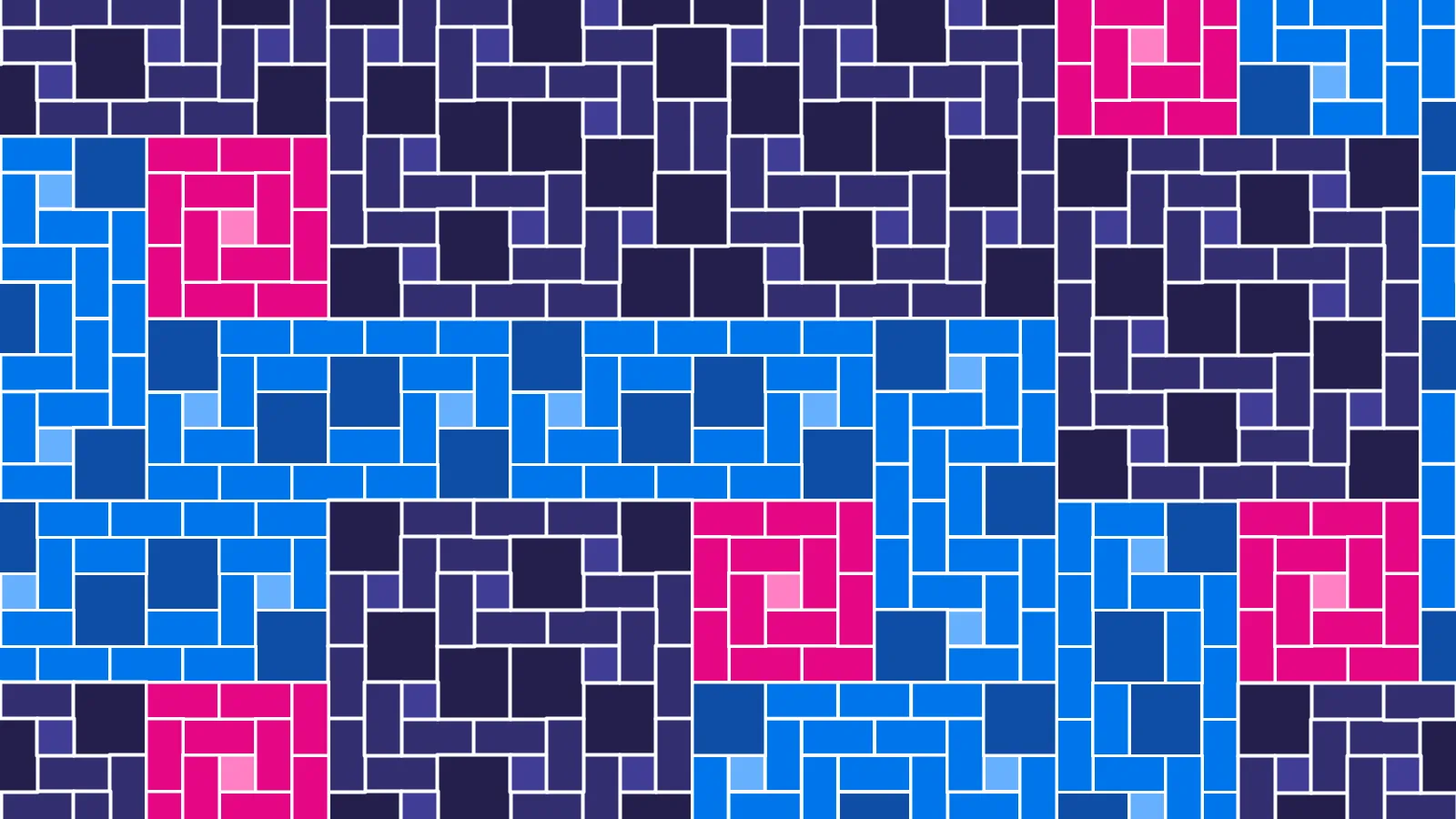Brick pavements and tatami mats are traditionally laid out so that no four meet at a single point to form a ┼ shape. Only a few ┼-free patterns can be made using and tiles, but the addition of tiles provides a lot more creative flexibility.

Three ┼-free brickwork sections laid out in the stretcher bond, herringbone, and pinwheel patterns, respectively.
When I discussed tatami tilings with my relative Oliver Linton, he suggested applying similar rules to other brick sizes to make beautiful tiling patterns. The tatami condition alone does not provide enough of a constraint to mathematically analyze tilings with arbitrary shapes and sizes, but it is a good starting point when looking for interesting patterns.
With the addition of square tiles, it’s possible to construct rectangular blocks that fit together to tesselate the plane while preserving the four-corner rule.
Copies of the same rectangular block can cover the plane without four-corner intersections.
This opens the door to self-similar tilings, which I’m very interested in! The goal is to use , , and tiles to construct , , and blocks which can be put together in the exact same way to make increasingly intricate tilings that maintain the tatami condition.
The simplest non-trivial example I could find involves a set of , , and two rectangular tilings.
Four tilings of rectangles with the same aspect ratios as the bricks they comprise.
Starting with any of these four layouts, we can replace each of the , , and bricks with a corresponding , , or rectangular tiling in the correct orientation. (This will produce a few four-corner intersections, but we can fix these by merging adjacent pairs of bricks.)
The first recursive iteration of our tiling sequence.
Repeatedly performing this operation gives an infinite sequence of tilings, but can we say they converge to anything? A tiling can be identified with its outline (i.e. the set of points on boundaries between two or more tiles). Note that if a point is in , then it will be in every subsequent unless it is one of the few bricks merged in . So we might sensibly define the limiting object of the tiling sequence as the union
This self-similar dense path-connected set satisfies the topological equivalent of the “four corners rule” — a pretty interesting list of mathematical properties!
The same strategy could be applied to other sets of , , and tiles with similar boundaries. What’s the prettiest brickwork fractal you can find?
